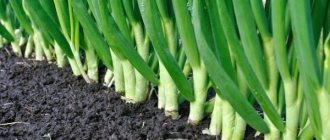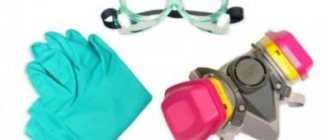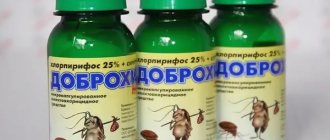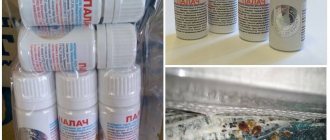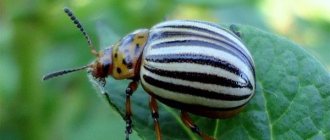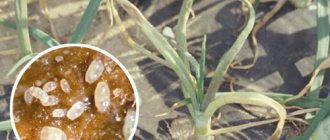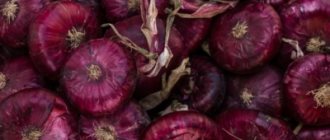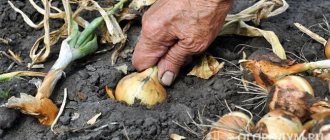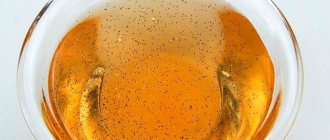Onions have a place in every garden, but it is unlikely that you will be able to get a large and juicy harvest without paying due attention to this vegetable. The most common and universal remedy in the fight for a rich onion harvest is feeding it with a solution of ammonia.
Ammonia is an aqueous solution of ammonium hydroxide (aqueous solution of ammonia); it is a colorless, transparent liquid with a pungent “ammonia” odor. It should not be confused with ammonia - ammonium chloride and the mineral consisting of it.
The most common area of use of ammonia is the production of nitrogen fertilizers, for example, ammonium nitrate. Gardeners and gardeners use so-called ammonia water to get rid of pests, and also as a source of easily digestible nitrogen.
What are the benefits of ammonia for onions?
The drug enriches plantings with nitrogen content and promotes green growth. The bulbs become strong and juicy, and the stems become elastic and green. Correct and timely use of the product will increase productivity and preserve onions until spring planting.
Ammonia diluted in water reduces the acidity of the soil and improves its structure. Ammonia is a convenient alternative to using various fertilizers of organic origin - manure, compost, peat; this product can be applied by root and foliar methods. The nitrogen contained in an aqueous solution of ammonia penetrates well into the soil and lingers for a long time without being washed out by rain.
Diluted ammonia is also useful for onions because even a small concentration of its vapor repels pests.
Important! Ammonia is a nutrient and medicine for bulbs in one preparation.
Tobacco dust from onion fly: Preparing an infusion
Tobacco infusion is an effective old recipe that gardeners have been using for many years, and it works great.
Recipe:
- Pour 200 g of tobacco dust (sold in garden stores) into 10 liters of hot water and add 30 g of laundry soap (shavings). Mix everything thoroughly and leave for 10 days.
How to water:
- The resulting solution can be sprayed on the plants leaf by leaf and watered the soil. It is advisable to carry out the treatment when the onion grows 3-5 cm or just hatches in the spring, then the net BEFORE the onion fly begins to fly (as a preventive measure).
By the way!
For prevention, you can also place “pugachi” - rags smeared with tar - in the spaces between the rows. According to experienced gardeners, the onion fly will fly around the onion beds.
When to use ammonia
The appearance of onion feathers will tell novice gardeners about the need to feed plants with ammonia. Yellowed tips and faded color indicate a nitrogen deficiency in the soil. Application of nitrogen-containing fertilizers will correct the situation and return the green brightness to the onion beds.
If insect pests or traces of their negative effects are found on the upper plant part of the onion, you can quickly get rid of them using ammonia. It will effectively destroy uninvited guests if specialized drugs are not available. But the use of ammonia solution as the main means of pest control is impractical from the point of view of financial savings.
Pest control with ammonia
The second function of ammonia is to repel insect pests with the help of smell. They cannot tolerate ammonia even in small quantities.
Onion crops have the following pests:
- secretive proboscis;
- onion fly;
- mole cricket;
- shallot aphid;
- wireworm
Treating onions with ammonia is a very effective measure against each of the listed pests. All thanks to the pungent odor of this substance and therefore there is no need to use drugs that have a greater degree of toxicity.
To effectively control pests, onion feathers are treated with ammonia with the addition of soap. Prepare the solution as follows:
- Approximately 100 g of laundry soap is grated on a fine grater.
- Pour dill (1 liter) over it and leave until completely dissolved, stirring thoroughly.
- Add 50 ml of ammonia to this solution.
The mixture should be treated with the plants immediately after its preparation.
If onion feathers are then eaten, they are then thoroughly washed under running water.
See also
When do you need to remove onion sets from the garden and how to properly store them at home? Read
Onion sets can also be processed. It is soaked in a solution of boric acid, and diluted ammonia and iodine are used to repel insects.
How to properly dilute ammonia
Planted onions can be watered with an ammonia solution in the form of root feeding or by irrigating green feathers. Spraying is less effective, since without adding special components, most of the solution will be sprayed and will not fall on the onion stems. A watering can with medium-sized holes will be the most convenient and optimal option for applying fertilizer.
It is believed that excessive replenishment of the soil with the product does not contribute to an increase in nitrate content. But do not forget that ammonia is a caustic substance and in high concentrations can cause harm instead of benefit.
Timely feeding of onions with ammonia in the correct proportions promotes the formation of large bulbs and improves the quality of the harvest.
Important! To feed onions, the maximum concentration of ammonia in 1 liter of water should not exceed 1 tbsp. l.
A potent remedy in the case of incorrectly calculated proportions can burn the stems and root system of the bulbs. To prepare the solution, use 25% ammonia, sold in any pharmacy. The dosage is determined based on the purpose of feeding.
To ensure that the onions have bright and dense feathers, 5 tbsp are diluted for spraying. l. ammonia in 10 liters of water. To obtain large bulbs, root feeding is carried out with a solution obtained from 3 tbsp. l. ammonia and 10 liters of water.
For feeding
The strong yellowness of the onion indicates a serious nitrogen deficiency, which can be overcome by root watering the plants with ammonia diluted in the maximum dose.
A solution of 10 liters of water and 3 tbsp. l. A 25% pharmaceutical drug is enough for 2 square meters. m of onion bed. It is advisable to water the plantings in the evening. Water the onions once every 10 days; this feeding will significantly increase the yield.
For preventive purposes
Nitrogen deficiency in the soil will affect the appearance of onions. But you should not allow such extreme conditions and take care of the quality of the harvest in advance. Ammonia will help prevent the appearance of yellowness and loss of brightness in the color of onion feathers.
For preventive purposes, onions are fertilized with liquid ammonia diluted in smaller proportions. To do this, just dilute 1 tbsp. l. solution in 10 liters of water and water the onion beds.
Important! If you exceed the maximum permissible level of ammonia in water, onion feathers can get burned. To prevent such a situation, half an hour after fertilizing with ammonia, the onion plantings should be sprayed with plain water.
For prevention in the spring, after the first green shoots, foliar feeding of onions is carried out. Spraying should help ensure that the product gets onto the onion feathers and exerts its effect for as long as possible.
Experienced gardeners advise treating the beds with ammonia for preventive purposes in the spring, after the soil has warmed up. Insect pests that cannot tolerate even the faint smell of ammonia will not be able to lay eggs in such soil.
Foliar irrigation
Ammonia is highly volatile and evaporates very quickly from surfaces. To make onion treatment by spraying more effective, it is advisable to use a special substance - an adhesive, which will extend the time that ammonia remains on the plant.
Adhesives are sold in specialized stores. However, using available components, it is easy to prepare such a substance at home:
- You can add laundry detergent or laundry soap to the prepared aqueous ammonia solution, which is previously diluted in warm water.
- If you plan to use only the aerial part of the onion, instead of soap, add 50 g of mustard powder to the diluted ammonia.
Foliar feeding with 10 liters of water and 5 tbsp. l. ammonia is carried out in good weather in the absence of wind and precipitation. It is better to do this work before sunrise or after sunset. It is better to keep the sprayer not too high so that the product reaches the green part of the onion in a critical amount.
For pest control
Ammonia has proven itself to be effective in the fight against the following main pests of onion plantings:
- Onion flies. They lay larvae that spoil root crops and cause significant damage to the crop. The composition obtained from 1 tbsp. l. ammonia and 10 liters of water, water between the beds during the period of active appearance and reproduction of insects - from June to July. After watering, it is recommended to loosen the soil.
- Aphid. One of the most common pests. Spraying onion plantings with a solution of 4 tbsp will help stop the invasion of aphid colonies. l. ammonia and 20 liters of water. Adding a special adhesive will fix the drug on the plants.
- Medvedka. Large burrowing insects that live underground and spoil plant bulbs. To scare away diggers, dissolve 10 ml of ammonia in 10 liters of water and water the root system of onions with the resulting mixture.
- The weevil beetle, or secretive proboscis beetle, is capable of causing serious damage to the onion crop by gnawing the above-ground green part of the plants. To control pests, regularly water the onion beds with ammonia diluted in a weak concentration - 1 tbsp. l. on a bucket of water. It is recommended to carry out treatment once a week, starting from the second half of June. After digging up the crop, the beds should be cleared of plant debris, as weevils like to overwinter in the husks. For greater efficiency, it is recommended to dig the soil thoroughly.
- Wireworms. The larvae of click beetles are malicious pests that undermine plant tubers. To destroy them, you should water the beds at the time of planting the onions with a weak solution of ammonia obtained from 10 ml of the product and 10 liters of water.
In order for the components of the solution to penetrate into the deep layers of the soil, it is recommended that after treatment, water the onion beds with running water in a volume exceeding the normal watering rate by 2 times.
Watering onions in open ground - timing and rate of watering, watering onions with salt water
Watering onions in open ground is one of the main agrotechnical procedures that ensure active growth and high yields of any vegetable crop.
When growing onions, special attention must be paid to watering, because the vegetable needs moisture for development, but its excess leads to fungal diseases. Therefore, to obtain a generous and high-quality onion harvest, you need to follow the basic subtleties of agricultural technology.
When to start watering
Moisturizing is a mandatory stage of care when growing onions. Despite its unpretentious “character”, this culture reacts very sensitively to lack of moisture. With a long stay in dry, unmoistened soil, the growth of green mass stops.
The first irrigation of onions is carried out immediately before planting. This is necessary so that the soil subsides a little and the planted bulbs do not end up on the surface of the soil. For watering you will need at least 2 buckets of water per 1 square meter. m.
Make furrows in the soil, water them and plant the bulbs. Sprinkle the vegetable with a thin layer of soil and water again. It is best to add a little potassium permanganate or Fitosporin to the water - this will help disinfect the soil and prevent the development of diseases.
Feeding scheme
Feeding onion plantings with ammonia, diluted in the correct concentrations, is carried out in June and July once a week. In addition, before the onset of winter, they fertilize the soil while loosening the beds by pouring a weak ammonia solution to a depth of 15 cm.
Experienced gardeners practice the following feeding scheme:
- first treat the onion by applying the product at the root;
- after a week, feed by spraying;
- after 10 days, repeat foliar feeding;
- let the onions rest for another 10 days - and feed them again using the root method.
It is recommended to fertilize with an ammonia solution once every 7 days. First, use a weakly concentrated solution, then increase the dosage to the desired level.
If the onion turns dark green, it means that fertilizing with ammonia needs to be stopped. Shrunken feather tips also become a signal to stop processing plants.
Signs of defeat
The onion fly has a wide distribution area. During the summer, an adult female is capable of breeding two generations of insects, and under favorable weather conditions - three. It is not surprising that the scale of harm it causes is quite large. Not only onion plantings suffer from the onion fly, but also leeks, garlic, tulips, gladioli and other plants with bulbs.
The main damage is caused by insects in the larval stage (nymphs) - small white worms, up to 10 millimeters in size, with black hook-shaped jaws. They are extremely voracious and often destroy entire crops.
The initial signs of damage to onion plantings appear in June, when the first outbreak of the pest occurs.
Affected plants can be distinguished by their appearance: the tips of the onion feathers turn yellow and curl, the heads stop growing, become soft, and acquire a putrid odor. Under the upper scales of turnips you can see moving white worms.
Disadvantages of the method
In addition to the undeniable benefits of treating onions with ammonia, there are also some disadvantages of this method of feeding. It is very important to observe the correct proportions of dilution of the product so as not to burn the plants and damage the onion root system.
Fertilizing with nitrogen should be stopped if the onion feathers darken. To prevent chemical burns, plantings should be sprayed with plain water 30 minutes after treatment.
An incorrectly calculated dosage of ammonia can cause serious harm to onion plants. Land poisoned by an excess amount of solution becomes unsuitable for further planting of vegetable crops.
Knowing all the pros and cons, every owner of a personal plot should be aware of the seriousness of the process of feeding onion beds with ammonia solution. The results of this treatment are pleasing - getting rid of pests and a high level of productivity. But watering and spraying plants takes a lot of time and requires careful attention to the crop being fed.
Reviews from gardeners
Many gardeners choose ammonia for its versatility and availability; they resort to it as an ambulance for the plant when there is a lack of nitrogen; it does not turn into nitrates in an overdose, but can burn the plant. The fairly high cost of pharmaceutical drugs is not an advantage of the method - large volumes of fertilizing are needed.
Be moderate in your efforts, follow safety precautions when working with ammonia, and with minimal investment you will get your environmentally friendly, golden harvest!
Precautionary measures
When treating onions with ammonia, you should not forget about observing safety precautions. The use of a caustic composition requires the use of protective equipment. To spray onions, the product is diluted in large quantities. Ammonia vapors entering the skin and respiratory system can cause serious harm to the body. To perform this type of work, personal protective equipment and basic precautions are required:
- The pungent odor of ammonia can damage the mucous membranes of the respiratory tract. People suffering from arterial hypertension should not feed onions using this product, as this may lead to an increase in blood pressure.
- Children and animals should be kept at a safe distance from the treated area.
- For watering you need to use a sprayer or watering can. It is better to work in the early morning or evening in the absence of sunlight. On a cloudy day, fertilizing can be done at any time. This is necessary to prevent the formation of burns on the onion feathers. Plants should be watered in calm weather to avoid getting the product on the skin.
- Before starting work, be sure to wear special overalls. If this is not available, you can use a respirator or gas mask, gloves, an apron and a headdress that hides your hair. All parts of the face must be covered with glasses and a special mask.
For safety reasons, it is recommended to use the maximum concentration of ammonia only in exceptional cases requiring emergency intensive processing of onions.
Other folk remedies
- Washing powder. Scoop up 1 handful of the cheapest powder and drop it into 10 liters of water. First, thoroughly pour water or treat after rain. Scoop up the soap solution with a ladle and pour the onion under the root. (advice from the video channel “Garden Head”).
- Sawdust or peat are mixed with creolin (20:1) and mulch the soil around the onions and garlic. This will scare away the pest.
- Dandelion infusion for prevention. Recipe: 350 g of finely chopped dandelion leaves are placed in 10 liters of water and infused for a week. You can water the onions with dandelion infusion every 2 weeks. And the first treatment should be carried out in the spring, before the fly begins to fly.
Agrotechnical techniques
Carrot and onion flies are two different pests that greatly annoy vegetables in our summer cottages. Interestingly, in combined plantings, onions and carrots protect each other from pests: onions save carrots from carrot flies, and carrots and onions from onion flies.
Modern manuals for gardeners and gardeners talk a lot about the need to observe crop rotation on the site. In onion plantings, it is necessary to observe at least a 3-year crop rotation. You cannot plant onions and garlic in the same place for 2 years in a row!
In the fall, after harvesting, the soil should be dug deep and all plant debris destroyed.
Experienced gardeners note that early planting of onions can significantly protect onions from damage by the onion fly. In early spring, onions have time to absorb maximum moisture from the soil, actively grow feathers, develop a root system, and by the time the onion fly flies, it turns out to be resistant to diseases and pests. In addition, there is a version that the onion fly prefers to feast on young plants, and adult specimens are not so attractive to it.
Weekly weeding and mulching the soil with peat are useful as preventative measures. It is recommended to carry out weeding very carefully. Noticed: onions damaged during weeding attract flies with their smell.
It is also worth paying attention to the selection of varieties for planting:
- Sweet varieties of onions are severely damaged by flies: local Yalta, Orange.
- The sharp varieties are rarely affected: Strigunovsky, Skvirsky, Zolotisty.
- The semi-sharp varieties have the middle position: Lugansky, Karatalsky.
We hope that our Country Cheat Sheet, dedicated to the fight against onion flies, was useful to you. Which remedies do you prefer: folk or chemical? We will be glad if you share your experience in the comment
